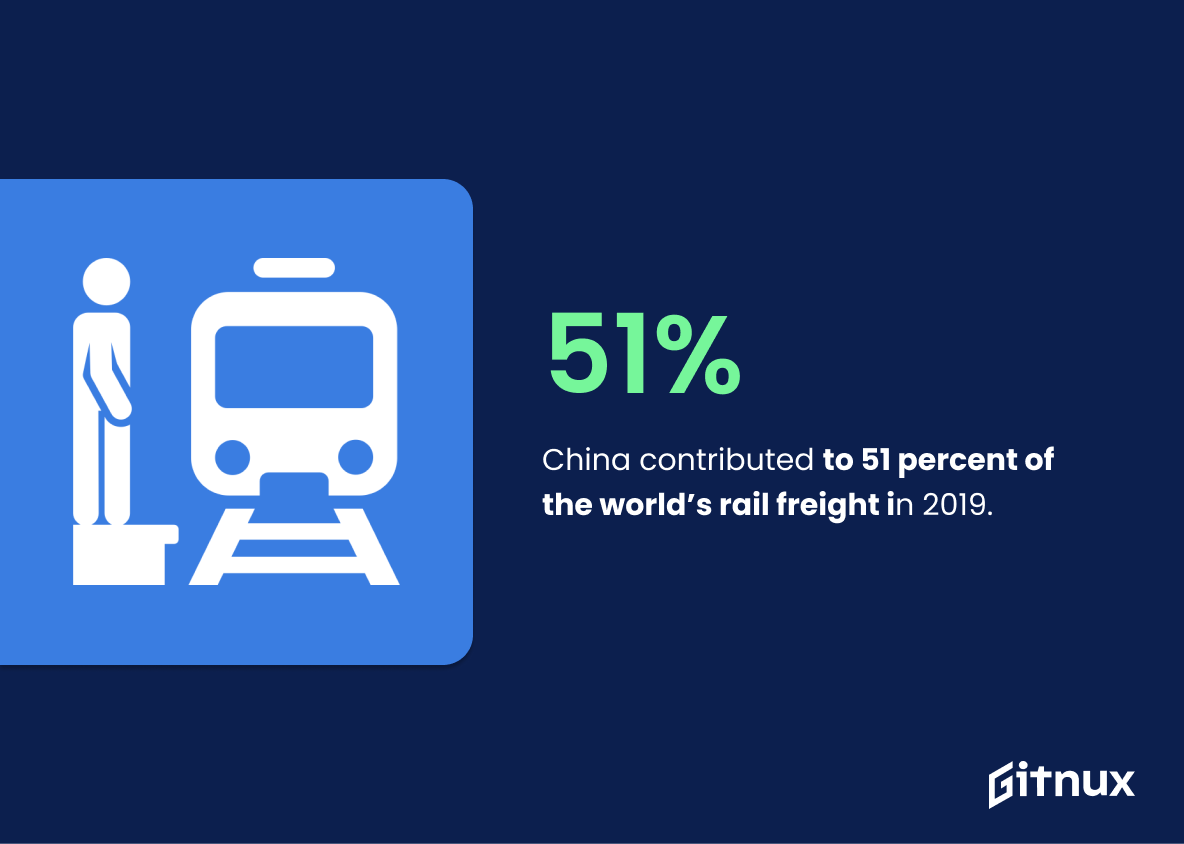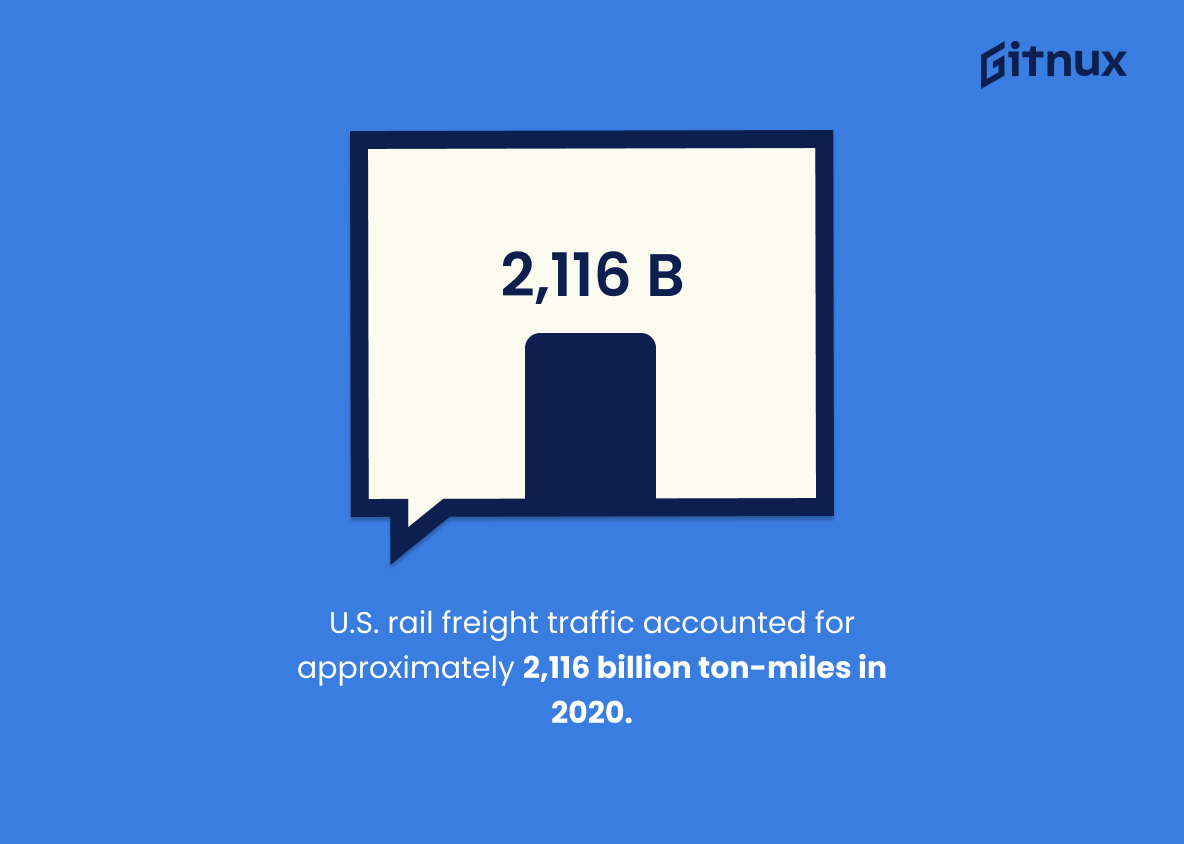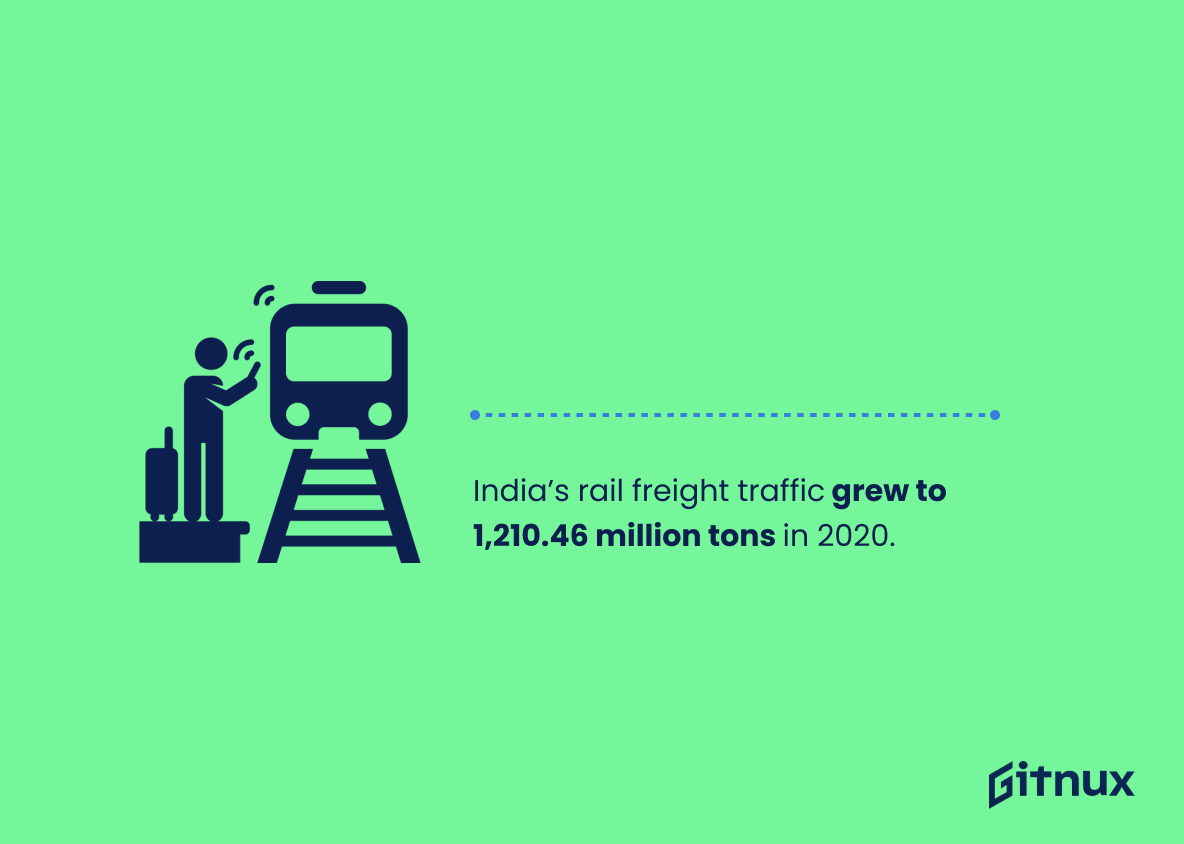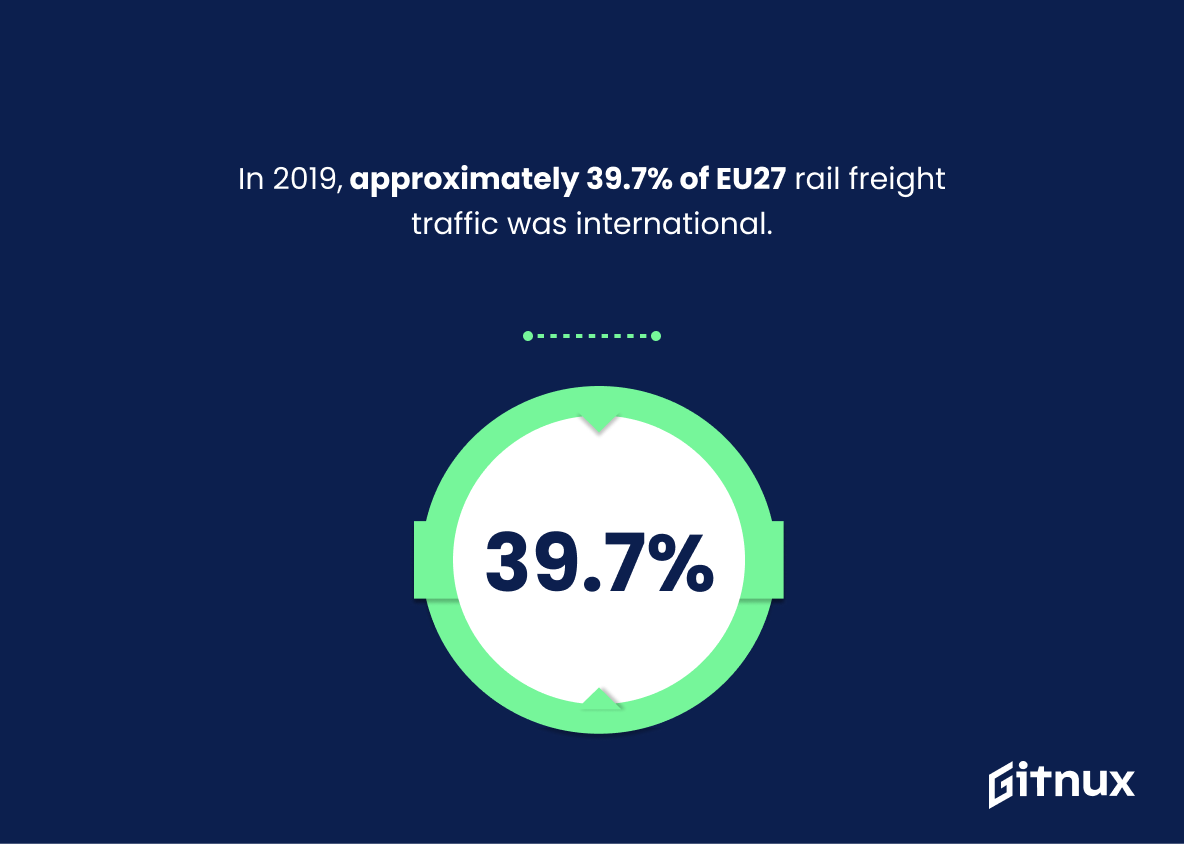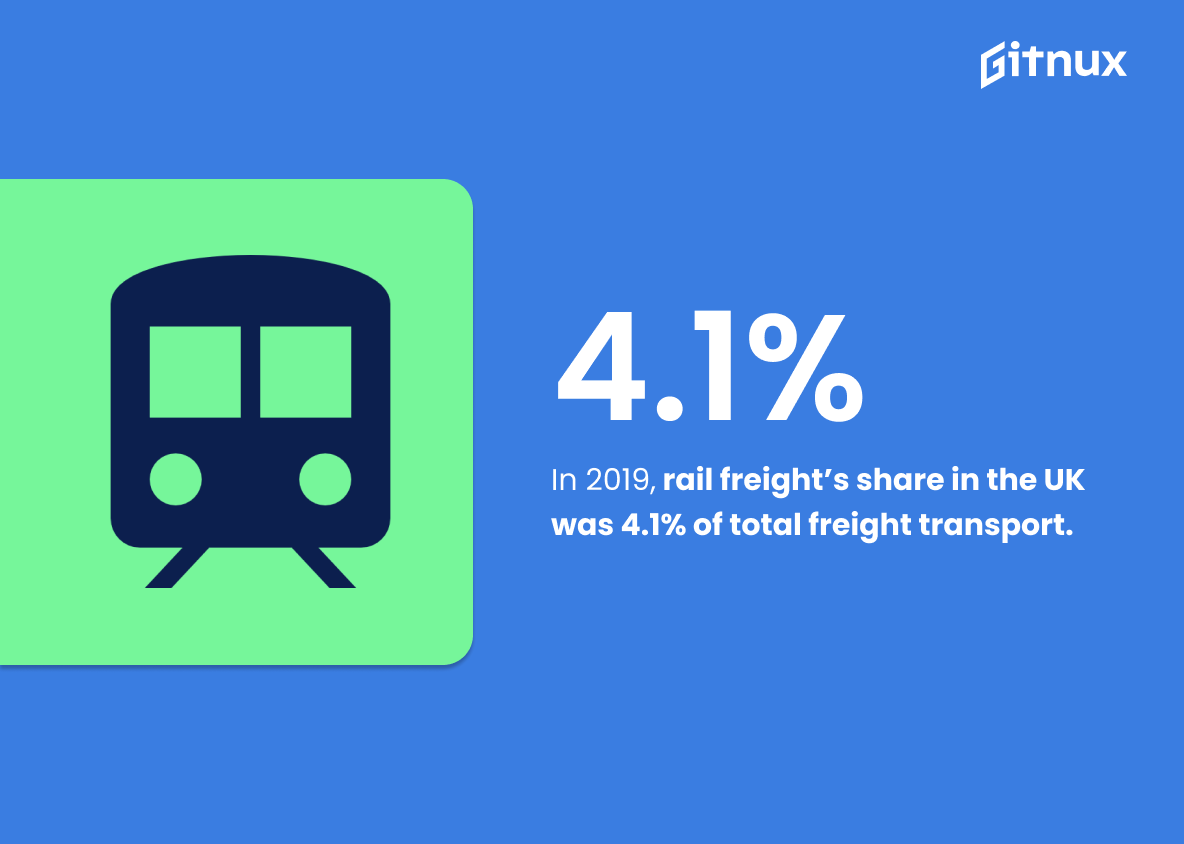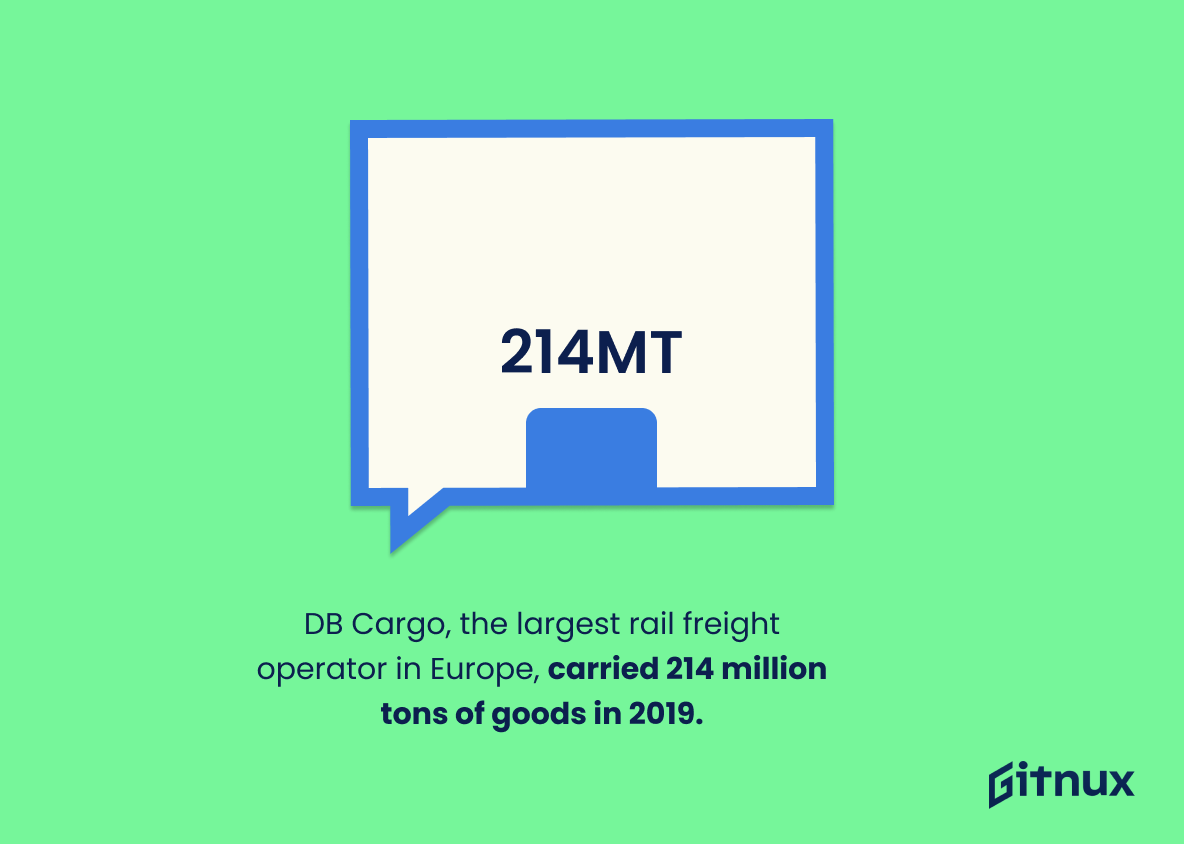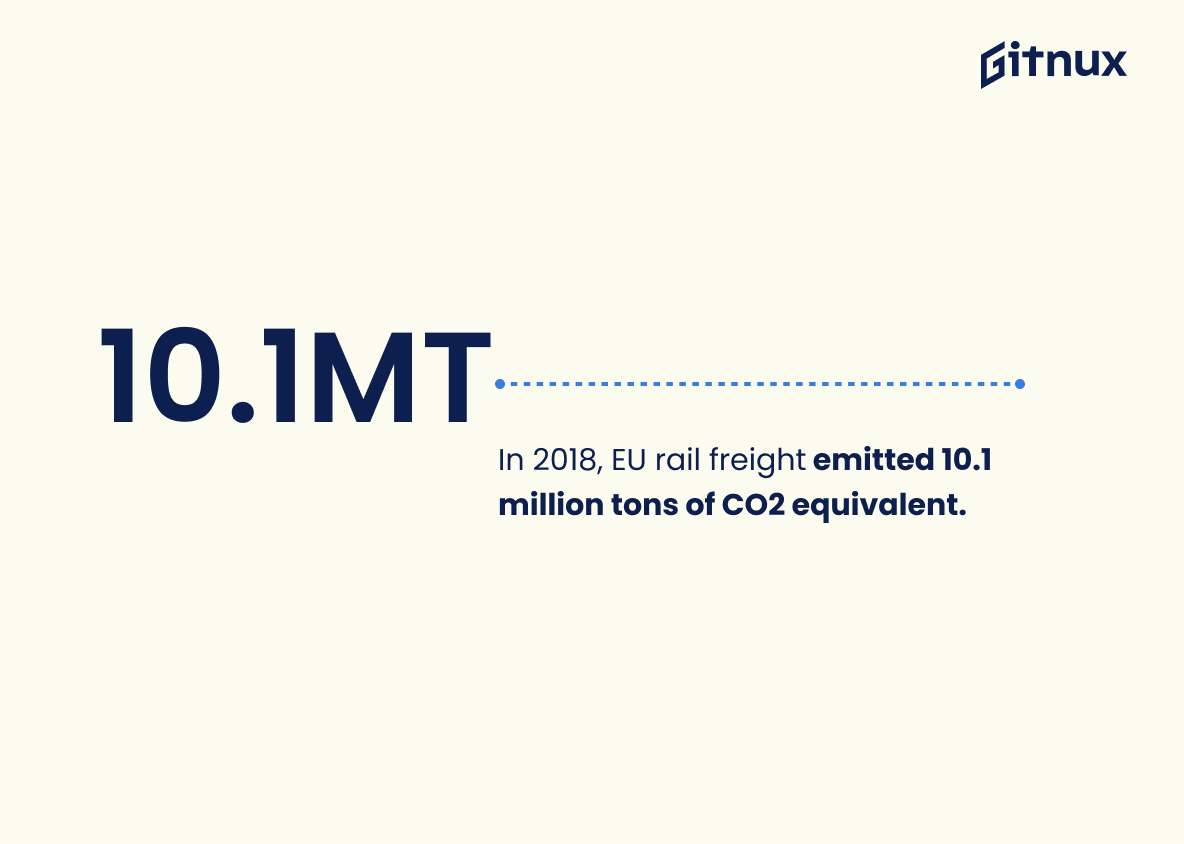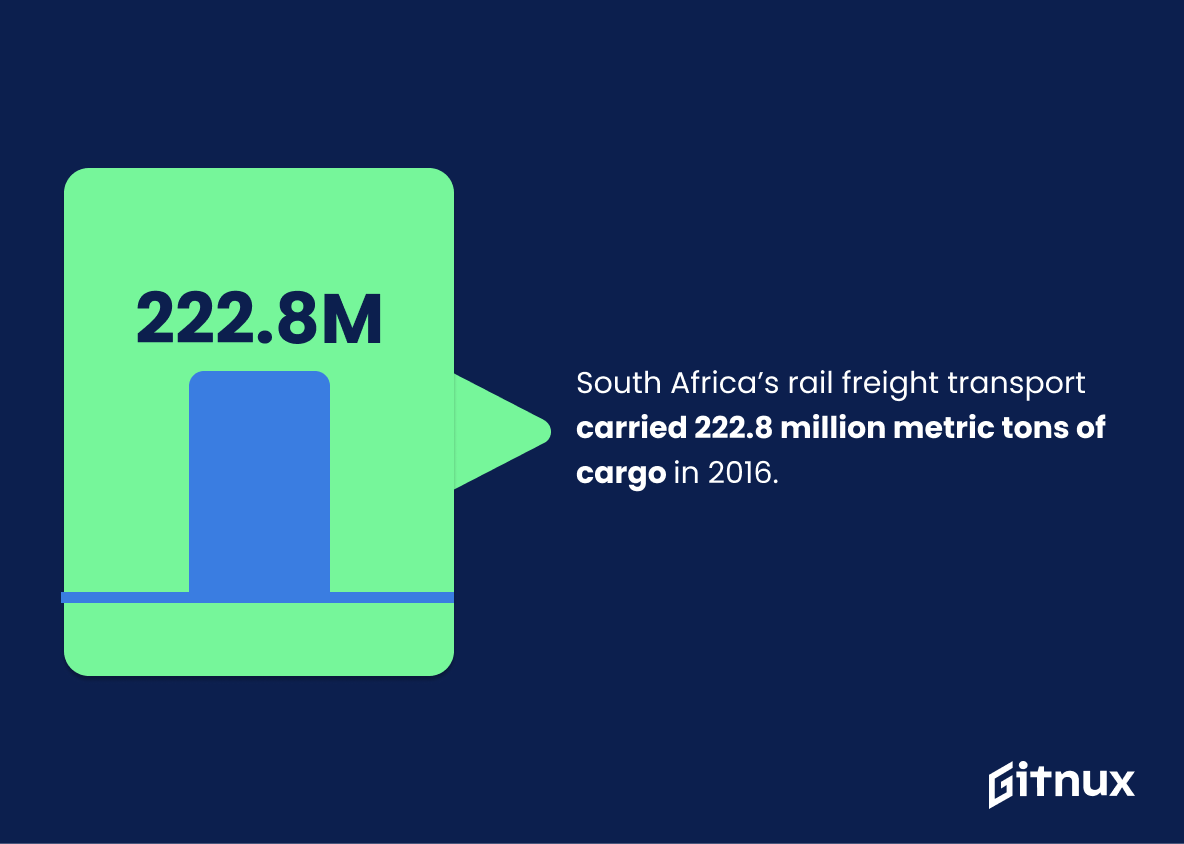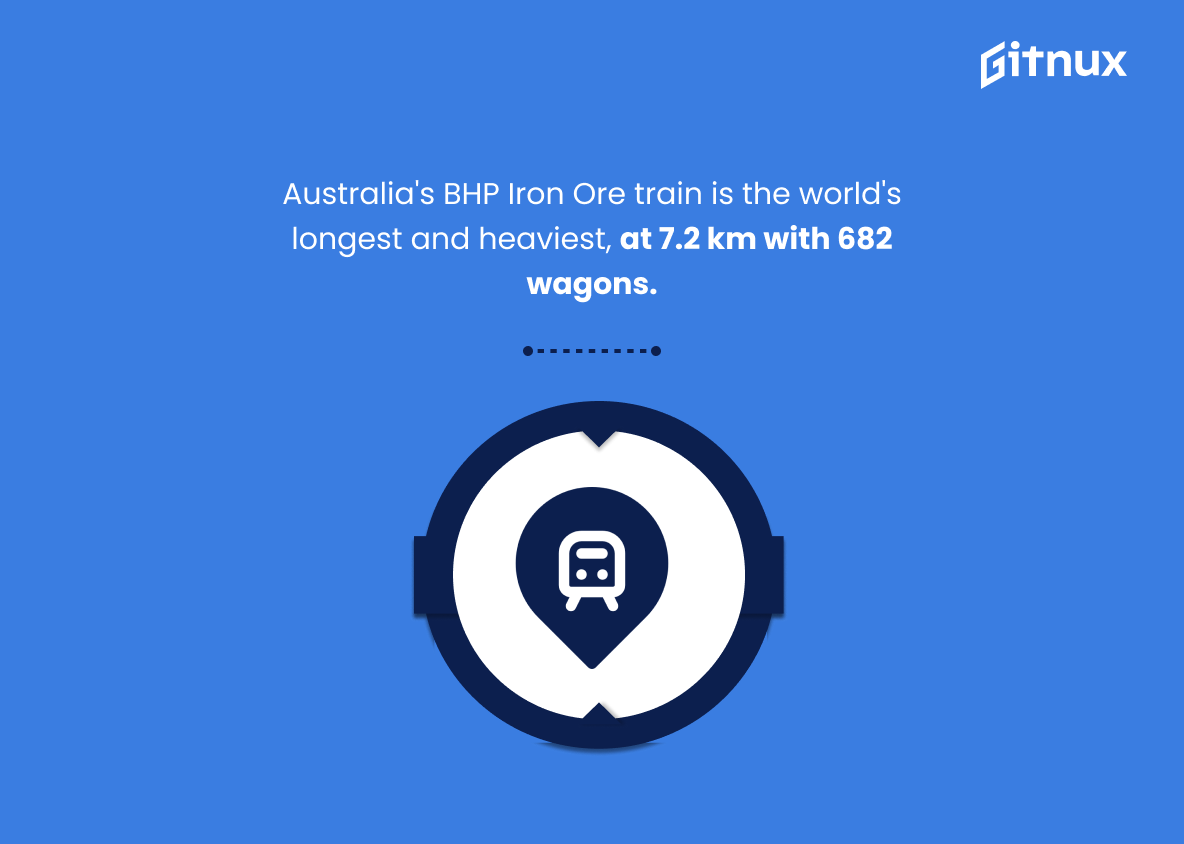Rail freight is an important part of the global transportation network, and its statistics provide insight into how it contributes to economies around the world. This blog post will explore some key rail freight statistics from 2019-2020, including total tonnage transported in various countries as well as investments made by railroads in infrastructure and equipment.
We’ll also look at international traffic share within Europe, greenhouse gas emissions associated with rail transport, employment figures for the industry in America, and more. Read on to learn about these fascinating facts related to global rail freight.
This statistic is a testament to the immense growth of rail freight traffic in recent years. It highlights the importance of rail freight in the global economy and its increasing role in the transportation of goods. It also serves as a reminder of the need for continued investment in rail infrastructure to ensure that rail freight remains a viable option for businesses and consumers.
Rail freight transport in the European Union (EU27) accounted for 421 billion ton-kilometers in 2019.
This statistic is a powerful indicator of the importance of rail freight transport in the European Union. It shows that rail freight is a major contributor to the EU’s economy, providing a reliable and efficient way to move goods across the continent. The 421 billion ton-kilometers figure is a testament to the success of rail freight in the EU, and serves as a reminder of the importance of investing in rail infrastructure to ensure its continued success.
Rail Freight Statistics Overview
China contributed to 51 percent of the world’s rail freight in 2019.
This statistic is a testament to the sheer magnitude of China’s rail freight industry. It highlights the country’s dominance in the global rail freight market and serves as a reminder of the importance of this sector in the Chinese economy. It also serves as a reminder of the potential for growth in the rail freight industry, both in China and around the world.
U.S. rail freight traffic accounted for approximately 2,116 billion ton-miles in 2020.
This statistic is a powerful indicator of the importance of rail freight in the United States. It shows that rail freight is a major contributor to the nation’s transportation infrastructure, accounting for a significant portion of the total ton-miles moved in 2020. This statistic is a testament to the efficiency and reliability of rail freight, and it highlights the need for continued investment in rail infrastructure to ensure that the U.S. remains competitive in the global freight market.
India’s rail freight traffic grew to 1,210.46 million tons in 2020.
This statistic is a testament to the success of India’s rail freight system, showing that it has been able to handle an increasing amount of freight traffic over the past year. It is a clear indication that the system is efficient and reliable, and that it is capable of meeting the needs of the country’s freight industry. This is an important point to make in a blog post about rail freight statistics, as it demonstrates the effectiveness of the system and its ability to handle the demands of the industry.
Canadian rail freight reached approximately 405 billion revenue ton-kilometers in 2019.
This statistic is a testament to the importance of rail freight in Canada. It shows that rail freight is a major contributor to the country’s economy, providing a significant source of revenue. It also demonstrates the efficiency of rail freight, as it is able to move large amounts of goods over long distances in a relatively short amount of time. This statistic is a key indicator of the success of the rail freight industry in Canada and is an important factor to consider when discussing rail freight statistics.
In 2019, approximately 39.7% of EU27 rail freight traffic was international.
This statistic is a telling indication of the importance of international rail freight traffic in the EU27. It highlights the significance of cross-border freight transport in the region, and the need for efficient and reliable rail freight services to ensure the smooth flow of goods and services. This statistic is a valuable insight into the current state of rail freight in the EU27, and provides a useful benchmark for future developments.
In 2019, rail freight’s share in the UK was 4.1% of total freight transport.
This statistic is a telling indication of the current state of rail freight in the UK. It reveals that rail freight is still a relatively small part of the overall freight transport market, suggesting that there is still much room for growth and improvement. This statistic is an important reminder of the need to continue to invest in rail freight infrastructure and services in order to ensure that it can become a more viable option for businesses and consumers.
DB Cargo, the largest rail freight operator in Europe, carried 214 million tons of goods in 2019.
This statistic is a testament to the success of DB Cargo as the largest rail freight operator in Europe. It highlights the sheer volume of goods that the company has been able to transport in a single year, demonstrating its capability and reliability in the industry. This impressive figure is a clear indication of the importance of rail freight in Europe and the role that DB Cargo plays in its success.
In 2018, rail freight greenhouse gas emissions in the EU were 10.1 million tons of CO2 equivalent.
This statistic is a stark reminder of the impact rail freight has on the environment. It highlights the need for more sustainable solutions to be implemented in order to reduce the amount of greenhouse gas emissions produced by rail freight in the EU. It is a call to action for those in the industry to take steps to reduce their emissions and to work towards a greener future.
South Africa’s rail freight transport carried 222.8 million metric tons of cargo in 2016.
This statistic is a powerful indicator of the importance of rail freight transport in South Africa. It shows that rail freight transport is a major contributor to the country’s economy, providing a reliable and efficient way to move goods and materials across the country. It also highlights the need for continued investment in rail infrastructure to ensure that the country’s rail freight transport system remains competitive and efficient.
The world’s longest and heaviest freight train is Australia’s BHP Iron Ore train, measuring 7.2 km (4.5 miles) long and composed of 682 wagons.
This statistic is a testament to the power of rail freight in Australia, showcasing the impressive capabilities of the country’s rail network. It highlights the sheer size and weight of the BHP Iron Ore train, demonstrating the capacity of rail freight to transport large amounts of cargo over long distances. This statistic is a great example of the potential of rail freight and serves as a reminder of its importance in the global economy.
In 2018, German rail freight accounted for 122.4 billion ton-kilometers, making it the busiest rail freight country in the EU.
This statistic is a testament to the importance of rail freight in Germany, highlighting its status as the busiest rail freight country in the EU. It demonstrates the sheer volume of goods and materials that are transported by rail in Germany, and the significance of rail freight in the country’s economy. This statistic is a powerful reminder of the importance of rail freight in the EU, and its potential to drive economic growth.
Conclusion
Rail freight is an important part of the global transportation network, with a wide range of statistics available to illustrate its importance. In 2019, global rail freight traffic reached 10,961.9 billion ton-kilometers and China contributed 51 percent of this total. The European Union (EU27) accounted for 421 billion ton-kilometers in 2019 while U.S., Indian and Australian rail freight traffic respectively totaled 2116 billion ton-miles, 1 210 46 million tons and 1 075 million net tonnes kilometers in 2020. Intermodal transport accounted for 50 5% of total US rail freight in 2020 while coal made up 37 5%.
Rail Freight’s share was 4 1% in UK whereas German Rail Freight had 122 4 Billion Ton Kilometer making it busiest country within EU region . DB Cargo carried 214 Million Tons goods as largest operator across Europe , South Africa 222 8 Million Metric Tons cargo & Australia 7 2 Km Long 682 Wagon Train being longest & heaviest train globally . 169 539 people employed by US industry along with $660 Billion Capital Expenditures from 1980 – 2018 further highlights significance associated with this mode of transport
References
0. – https://www.www.deutschebahn.com
1. – https://www.www.guinnessworldrecords.com
2. – https://www.www150.statcan.gc.ca
3. – https://www.uic.org
4. – https://www.www.gov.uk
5. – https://www.ec.europa.eu
6. – https://www.economictimes.indiatimes.com
7. – https://www.www.statista.com
8. – https://www.afdc.energy.gov
